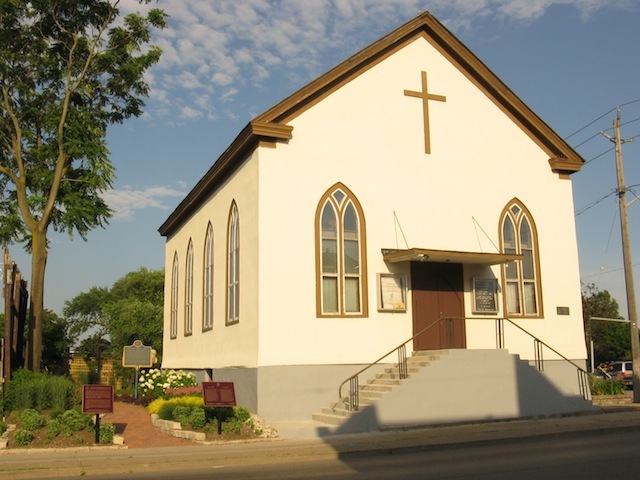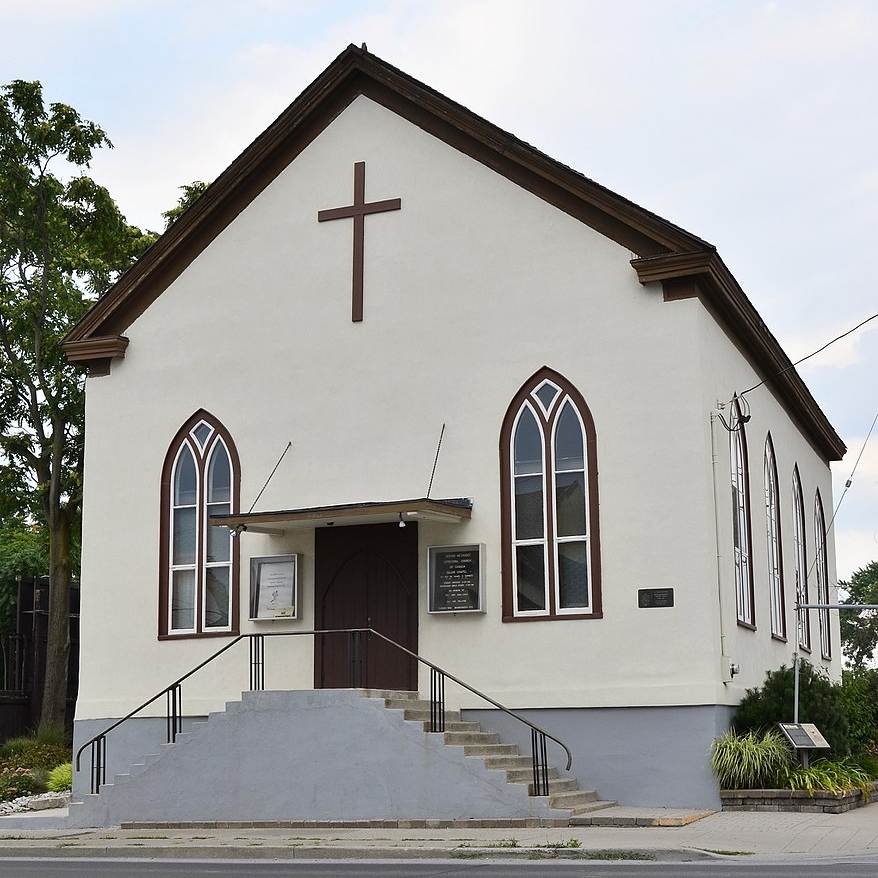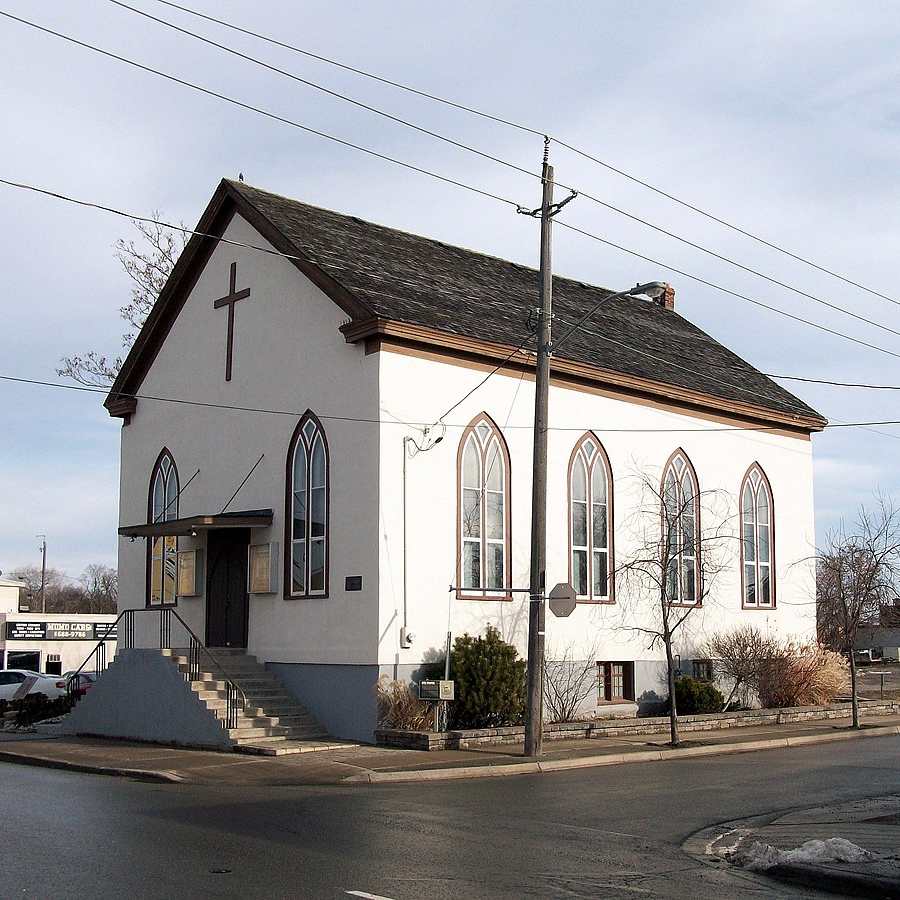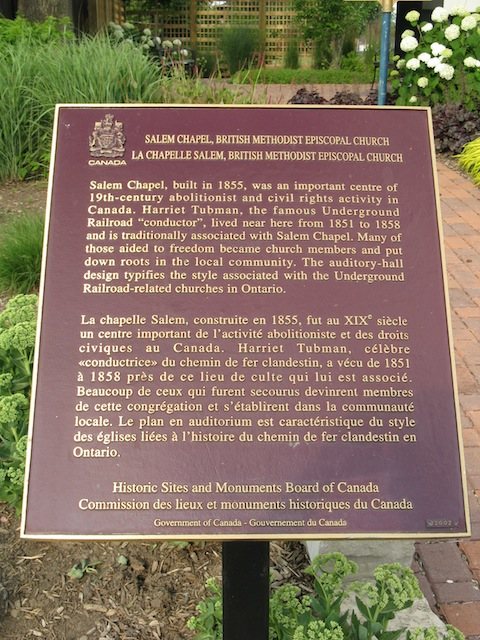Salem Chapel British Methodist Episcopal Church National Historic Site

© Wayne Adam, 2011
The Salem Chapel British Methodist Episcopal Church was designated a national historic site in 2000.
Commemorative plaque: 92 Geneva Street, St. Catharines, OntarioFootnote 1
Salem Chapel, British Methodist Episcopal Church
Salem Chapel, built in 1855, was an important centre of 19th-century abolitionist and civil rights activity in Canada. Harriet Tubman, the famous Underground Railroad “conductor” lived near here from 1851 to 1858 and is traditionally associated with Salem Chapel. Many of those aided to freedom became church members and put down roots in the local community. The auditory-hall design typifies the style associated with the Underground Railroad-related churches in Ontario.
Description of historic place
Salem Chapel British Methodist Episcopal Church National Historic Site of Canada is a gable-fronted church set on a high foundation. Located at 92 Geneva Street, in St. Catharines, Ontario, this stucco-clad building is distinguished by its regularly arranged pointed-arch windows, modest scale and overall simplicity. Official recognition refers to the church on its footprint at the time of designation.

© Public Domain

© Public Domain
Heritage value

© Wayne Adam, 2011
Salem Chapel British Methodist Episcopal Church was designated a national historic site of Canada in 2000. It is recognized because:
- it is typical of the auditory-hall design of UGRR-related churches; and,
- through its association with famed UGRR conductor Harriet Tubman, it was an important locus of abolitionist activity in Canada.
Salem Chapel British Methodist Episcopal Church was an important centre of 19th-century abolitionist and civil rights activity in Canada. Built circa 1855, it replaced a smaller log church in order to accommodate St. Catharines’ growing community of refugees arriving via the Underground Railroad. Among them was Harriet Tubman, the famous UGRR conductor, who lived near Salem from 1851-1858 and personally led many refugees from the southern United States to safety in Canada. The heritage value of this church resides in its exceptional associations with the anti-slavery movement and the early UGRR black community to which it bears witness as illustrated by the church with its auditory-hall form, typical of early African Canadian churches.
Sources: Historic Sites and Monuments Board of Canada, Minutes, November 1999, June 2001.
The National Program of Historical Commemoration relies on the participation of Canadians in the identification of places, events and persons of national historic significance. Any member of the public can nominate a topic for consideration by the Historic Sites and Monuments Board of Canada.
Related links
- National historic designations
- National historic persons
- National historic sites designations
- National historic events
- Submit a nomination
- The Salem Sanctuary Of History
- This Week in History: Reverend Jennie Johnson (1868–1967)
- Historica Canada - Heritage Minutes - Underground Railroad
- Underground Railroad National Historic Event
- Harriet Tubman National Historic Person
- Thornton and Lucie Blackburn National Historic People
- Date modified :